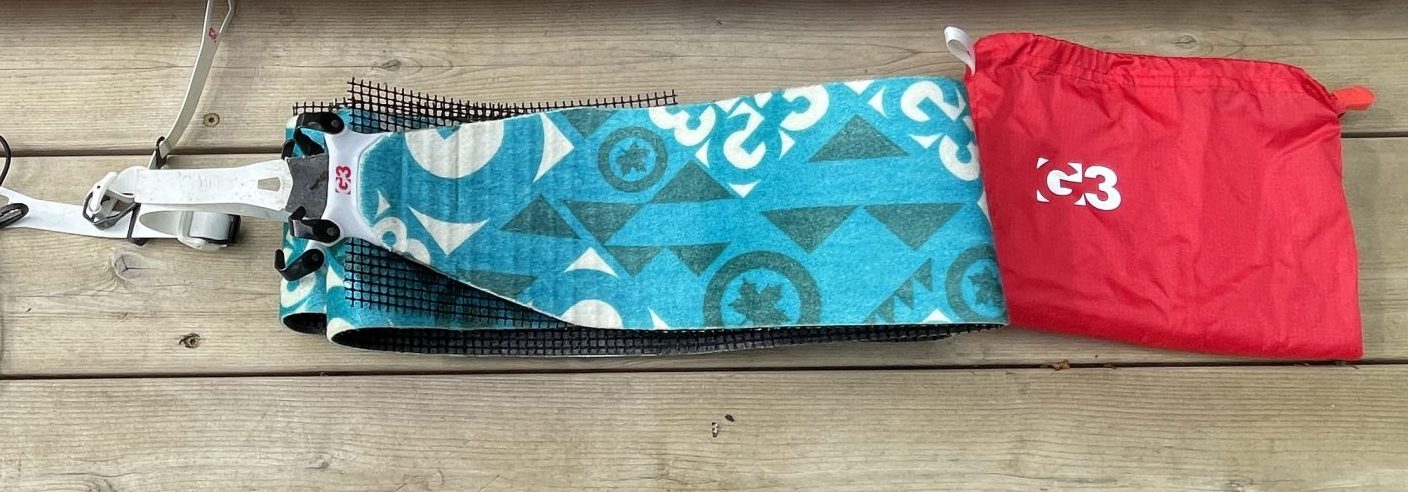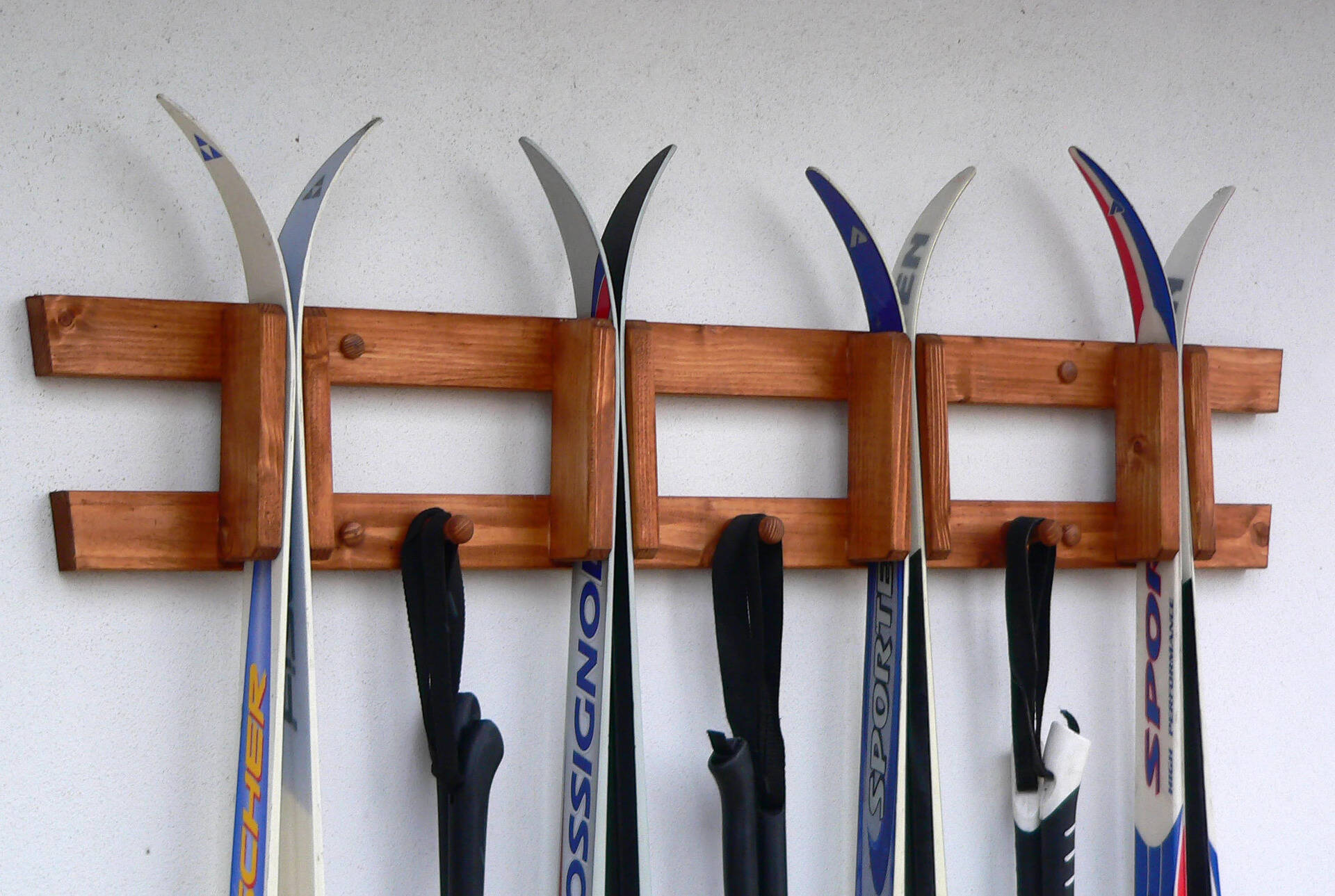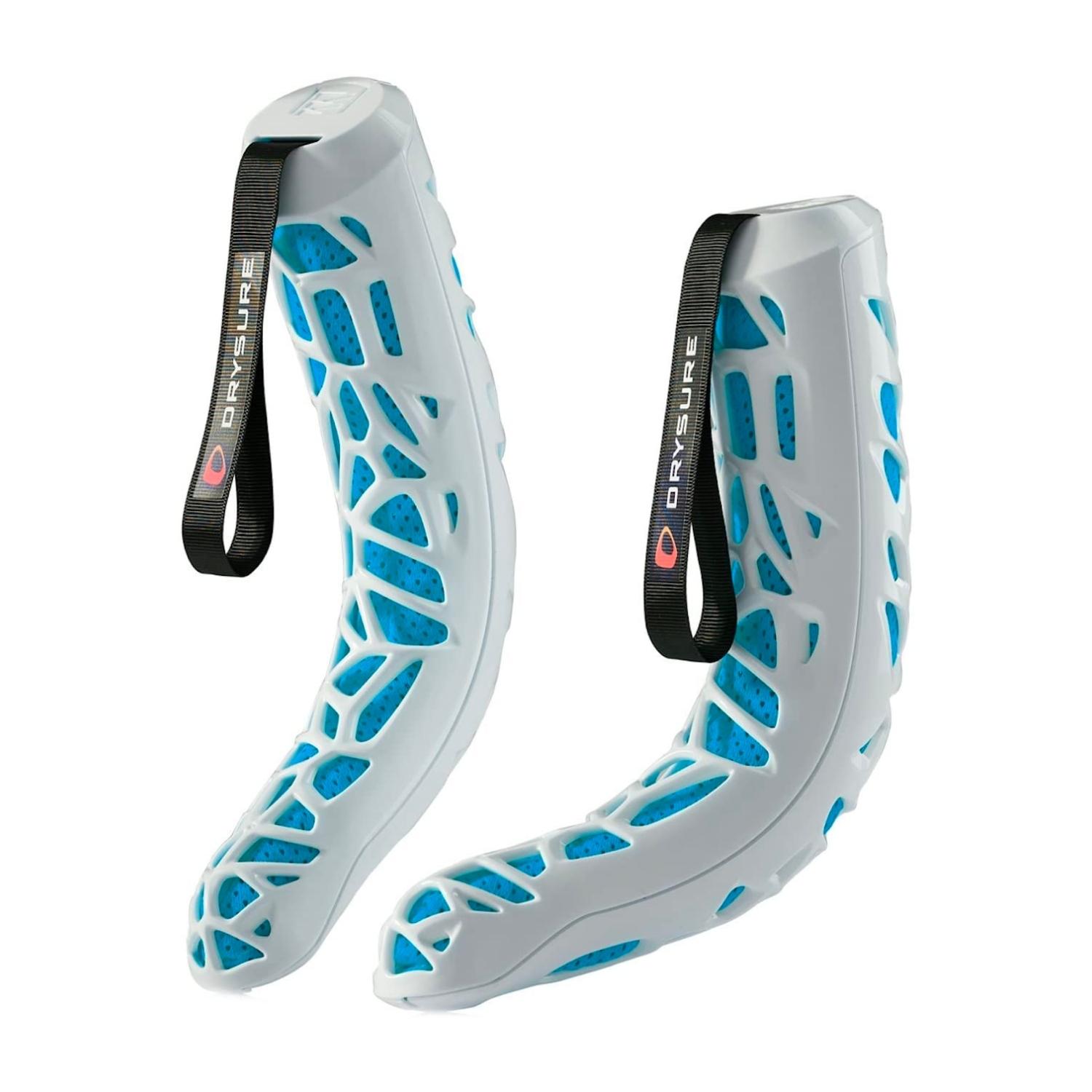

Articles
How To Store Ski Clothes
Modified: March 19, 2024
Discover the best way to store your ski clothes with our informative articles. Keep your gear organized and ready for your next snowy adventure.
(Many of the links in this article redirect to a specific reviewed product. Your purchase of these products through affiliate links helps to generate commission for Storables.com, at no extra cost. Learn more)
Introduction
Welcome to the world of skiing! Whether you’re a novice or an experienced skier, one thing is certain: ski clothes are an essential part of your winter adventure. From waterproof jackets to insulated pants, your ski gear keeps you warm, dry, and protected from the elements. But what happens when the ski season comes to an end? Properly storing your ski clothes is crucial to maintain their quality and ensure they’re ready for your next snowy adventure.
In this article, we’ll explore the importance of storing ski clothes correctly and provide you with valuable tips on how to do it. We’ll cover everything from choosing the right storage area to cleaning and folding your ski clothes to maximize their lifespan. So, let’s dive in and discover the best practices for storing your ski gear.
Key Takeaways:
- Properly storing ski clothes is crucial for maintaining their quality, functionality, and longevity. From choosing the right storage area to cleaning and folding techniques, these best practices ensure your gear is ready for your next snowy adventure.
- Whether you opt for closets, ski bags, or garment bags, the key to effective ski gear storage lies in organization, protection, and accessibility. Follow additional tips like using desiccants and regularly airing out your gear to preserve their quality.
Read more: How To Store Skis At Home
Why Proper Storage of Ski Clothes is Important
Proper storage of ski clothes is essential for maintaining their quality and performance. Here’s why:
- Prolongs Lifespan: Ski clothes are designed to withstand harsh weather conditions, but they aren’t immune to wear and tear. Storing them correctly helps prevent damage, such as fabric fading, color bleeding, or loss of insulation, which can shorten their lifespan.
- Maintains Functionality: Ski clothes are made with advanced materials and technologies to provide warmth, breathability, and waterproofing. Improper storage, like leaving them crumpled or damp, can compromise their functionality. By storing them properly, you ensure that they’ll perform at their best when you hit the slopes again.
- Prevents Mildew and Odor: Ski clothes often get wet while skiing, and if not dried and stored correctly, they can develop a musty smell or even harbor mildew. Proper storage techniques help prevent these issues, keeping your gear fresh and ready for your next adventure.
- Saves Money: Investing in ski clothes can be costly, so it’s important to take good care of them. By properly storing your ski gear, you reduce the risk of damage and the need for replacement, saving you money in the long run.
Now that we understand the importance of proper storage, let’s explore the best practices to ensure your ski clothes stay in top condition during their offseason. From choosing the right storage area to cleaning and folding techniques, we’ll give you all the information you need to effectively store your ski gear.
Choosing the Right Storage Area
Choosing the right storage area for your ski clothes is crucial to protect them from damage and maintain their quality. Here are a few factors to consider when selecting the ideal storage space:
- Dryness: Moisture can be detrimental to ski clothes, leading to mold, mildew, and odor. Ensure that your chosen storage area is dry and well-ventilated to prevent these issues. Avoid storing your ski gear in damp basements or areas prone to humidity.
- Temperature: Extreme temperatures can also impact the quality of your ski clothes. It’s best to store them in a cool, stable environment to prevent any potential damage. Avoid locations that are subject to high heat or freezing temperatures, such as attics or uninsulated garages.
- Protection from Sunlight: Direct sunlight can fade the colors of your ski clothes over time. Choose a storage area that provides protection from UV rays to maintain the vibrant appearance of your gear. If you’re storing them in a closet, opt for a dark and shaded spot.
- Space: Consider the amount of space you’ll need for storing your ski clothes. Ensure that the selected area allows for adequate room to prevent overcrowding, which can lead to wrinkles or damage.
- Access: Accessibility is key, especially if you plan to use your ski gear frequently or during unexpected snowy days. Make sure the storage area is easily accessible so you can retrieve your ski clothes without hassle when needed.
Once you’ve found the perfect storage area that meets these criteria, you’re one step closer to ensuring the longevity and quality of your ski clothes. In the next section, we’ll discuss the importance of cleaning your ski gear before storing them.
Cleaning Ski Clothes Before Storage
Before storing your ski clothes, it’s crucial to clean them properly. Skiing can expose your gear to dirt, sweat, and even stains, which, if left untreated, can damage the fabric and attract pests. Follow these steps to ensure your ski clothes are clean and ready for storage:
- Check the Care Labels: Start by checking the care labels on your ski clothes for specific cleaning instructions. Different materials may require different cleaning methods, so it’s important to follow the manufacturer’s recommendations.
- Spot Clean Stains: If you notice any stains on your ski clothes, it’s best to spot clean them before storing. Use a gentle stain remover or a mild detergent and a soft cloth to target the stains. Avoid using harsh chemicals or scrubbing vigorously, as this can damage the fabric.
- Wash According to Instructions: If your ski clothes are machine washable, wash them according to the care label instructions. Use cold water and a gentle cycle to avoid agitating the fabric. It’s recommended to wash ski gear separately to prevent any potential damage from zippers or Velcro.
- Use a Mild Detergent: Opt for a mild detergent specifically designed for technical fabrics or outdoor gear. Harsh detergents or fabric softeners can leave a residue on the fabric, compromising its performance. Follow the detergent instructions and avoid using too much product.
- Avoid Heat: When drying your ski clothes, avoid high heat as it can damage the fabric. Instead, opt for a low heat setting or air dry them. Placing your gear over a drying rack or using a clothesline is ideal for preserving the quality of the fabric.
- Check for Complete Dryness: Before storing your ski clothes, ensure that they are completely dry. Any remaining moisture can lead to mold or mildew growth during storage. Give your gear ample time to air dry before packing them away.
By following these cleaning steps, you’ll ensure that your ski clothes are fresh, stain-free, and ready for storage. In the next section, we’ll discuss the pros and cons of folding versus hanging your ski clothes.
Folding vs. Hanging Ski Clothes
When it comes to storing ski clothes, the decision between folding and hanging depends on various factors. Here’s a breakdown of the pros and cons of each method:
Folding Ski Clothes:
- Space-Saving: Folding ski clothes allows you to maximize storage space. By folding them compactly, you can store them in drawers, plastic bins, or on shelves without taking up too much room.
- Prevents Wrinkles: Folding your ski clothes properly helps prevent wrinkles. Lay them flat, smoothing out any creases, and fold them neatly. This ensures that your gear will be ready to wear without having to iron or steam them before hitting the slopes.
- Easier to Pack for Travel: If you’re planning to travel with your ski gear, folding is the most practical option. Neatly folded ski clothes can be easily packed into a suitcase or travel bag, allowing you to bring your gear with you wherever you go.
- Unsuitable for Delicate Fabrics: While folding is generally suitable for most ski clothes, delicate fabrics like down-filled jackets may benefit from being stored in a hanging position. The weight of the material can cause the insulation to compress and lose its loft if folded for an extended period.
Hanging Ski Clothes:
- Preserves Shape: Hanging ski clothes can help maintain their shape, especially for items like insulated jackets or pants. Gravity works in your favor, preventing any potential flattening or creasing that may occur with folding.
- Easy Access: Hanging your ski clothes in a closet allows for easy access. You can quickly grab the items you need, saving time and eliminating the need to search through folded piles of clothes.
- Requires Adequate Hanging Space: Hanging ski clothes does require adequate hanging space in your closet. Ensure that there is enough room for your gear to hang without being cramped or crushed by other garments.
- Vulnerable to Stretching: Hanging ski pants or bibs can stretch the fabric at the waistline over time. To avoid this, consider folding the waistband or using pant hangers with clips to support the weight of the pants without straining the fabric.
The choice between folding and hanging ultimately depends on personal preference, storage space availability, and the specific items in your ski gear collection. You can also combine both methods by folding some items while hanging others.
In the next sections, we’ll explore different storage options for ski clothes, including closets, ski bags, and garment bags, to help you choose the most suitable option for your needs.
To store ski clothes, make sure they are completely dry before packing them away to prevent mold and mildew. Store in a cool, dry place away from direct sunlight to maintain the fabric’s integrity.
Read more: How To Store Skis
Storing Ski Clothes in a Closet
If you have sufficient closet space, storing your ski clothes in a closet can be a convenient and accessible option. Here’s how to effectively store your ski gear in a closet:
- Clear out Space: Start by clearing out enough space in your closet to accommodate your ski clothes. Remove any unnecessary items, creating room specifically for your ski gear.
- Clean the Closet: Before placing your ski clothes in the closet, give it a thorough cleaning. Dust the shelves, vacuum the floor, and wipe down any surfaces to ensure a clean and fresh environment for your gear.
- Use Hangers: Hang items that are best stored in a hanging position, such as insulated jackets, ski pants, or base layers. Use sturdy hangers to provide proper support and avoid stretching or warping the garments. Consider using specialized hangers, like pant hangers with clips for ski pants or hangers with non-slip grips to prevent items from sliding off.
- Organize by Type: Group your ski clothes by type to make it easy to locate specific items when needed. For example, dedicate one section of your closet for jackets, another for pants, and separate shelves or drawers for base layers, socks, and accessories.
- Fold Smaller Items: Smaller items like gloves, hats, and scarves can be folded and placed in designated storage boxes or containers. Label the containers for easy identification and stack them neatly on a shelf.
- Avoid Overstuffing: Resist the temptation to stuff your ski clothes tightly in the closet. Overcrowding can lead to wrinkles, damages, or difficulties in finding and retrieving specific items. Allow sufficient space for each piece of clothing to hang or lie flat without being crushed or wrinkled.
- Keep Accessories Handy: Utilize the closet’s compartments or hooks to keep your ski accessories easily accessible. Hang goggles, helmets, or neck gaiters on hooks or place them in designated storage pockets attached to the inside of the closet door.
By following these steps, you can effectively store your ski clothes in a closet, keeping them organized, protected, and ready for your next skiing adventure. In the next sections, we’ll explore two other storage options: ski bags and garment bags.
Storing Ski Clothes in a Ski Bag
A ski bag is a convenient and practical option for storing your ski clothes, especially if you travel frequently or need to transport your gear. Here’s how to effectively store your ski clothes in a ski bag:
- Choose a Suitable Ski Bag: Invest in a ski bag that is designed specifically for storing ski clothes. Look for a bag that offers ample storage space, durable construction, and compartments or pockets for organizing different items.
- Clean and Dry Your Gear: Before packing your ski clothes in the bag, ensure that they are clean and completely dry. Any moisture left on the fabric can lead to mold or mildew during storage.
- Roll Clothing Items: Rolling your ski clothes is an efficient way to maximize space and minimize wrinkles. Start with your base layers, followed by pants, jackets, and other items. Roll them tightly and secure with rubber bands or straps to keep them compact.
- Separate Clean and Dirty: If you’re traveling or storing dirty ski clothes, consider using separate compartments or ziplock bags to keep them separate from the clean ones. This helps prevent odors and contamination.
- Organize in Compartments: Utilize the different compartments or pockets in your ski bag to keep your gear organized. Dedicate specific areas for jackets, pants, accessories, and smaller items like hats or gloves.
- Protect Fragile Items: If you have delicate items, such as goggles or sunglasses, consider using protective cases or wrapping them in soft fabric to prevent scratches or damages during storage.
- Secure the Bag: Once you’ve packed your ski clothes, securely zip up the ski bag and fasten any additional straps or buckles to keep everything in place. Double-check that the bag is properly closed to prevent any potential damage during transportation or storage.
Storing your ski clothes in a ski bag is not only convenient but also provides easy transportability and keeps your gear well-protected. Remember to regularly inspect your ski bag for any signs of wear and tear, and replace it if necessary. In the next section, we’ll explore another storage option: garment bags.
Storing Ski Clothes in a Garment Bag
A garment bag offers a great storage solution for ski clothes, especially for those who want to keep their gear protected and organized. Here’s how you can effectively store your ski clothes in a garment bag:
- Choose a Suitable Garment Bag: Look for a garment bag that is long enough to accommodate your ski jackets, pants, and other gear. Opt for a bag made of durable materials to provide adequate protection.
- Clean and Dry Your Gear: Before storing your ski clothes in the garment bag, ensure that they are clean and completely dry. Cleaning your gear before storage helps prevent any odors or stains from setting in.
- Hang the Clothes: Hang your ski jackets, pants, and other garments inside the garment bag. Use hangers with clips or loops to properly hang and secure the items. This will help prevent wrinkles and ensure that your gear maintains its shape.
- Separate Layers: If you have multiple layers or base layers, consider placing them in separate compartments or smaller bags within the garment bag. This makes it easier to distinguish between the different items and keeps them organized.
- Protect Fragile Accessories: Use pockets or smaller compartments in the garment bag to store ski accessories like goggles, gloves, or hats. This helps protect them from getting lost or damaged during storage.
- Zip and Seal the Bag: Once your ski clothes and accessories are properly placed inside the garment bag, zip it up and secure all the closures. Ensure that the bag is tightly sealed to keep dust, pests, and any potential moisture out.
- Store in a Cool, Dry Location: Find a suitable storage area for your garment bag, preferably a cool and dry place. Avoid areas that are prone to moisture or extreme temperatures, as these conditions can potentially damage your gear.
Storing your ski clothes in a garment bag offers an added layer of protection and keeps your gear neatly organized. Make sure to periodically check the bag and its contents for any signs of damage or moisture. With proper care, your ski clothes will be well-preserved and ready for the slopes when the next winter season arrives.
With these storage options and tips in mind, you can ensure that your ski clothes remain in optimal condition during their offseason. Now, let’s explore some additional tips for storing ski clothes to further enhance their longevity and performance.
Additional Tips for Storing Ski Clothes
To ensure the best storage for your ski clothes, here are some additional tips to keep in mind:
- Avoid Plastic Bags: Avoid storing your ski clothes in plastic bags, as they can trap moisture and lead to mold or mildew. Opt for breathable fabric or mesh bags instead.
- Use Desiccants: Place desiccant packs or moisture-absorbing products, like silica gel packets, in your storage area. They help absorb any excess moisture and keep your gear dry.
- Inspect for Damage: Before storing your ski clothes, inspect them for any damage or wear and tear. Replace any broken zippers, ripped seams, or damaged insulation to ensure that your gear is in excellent condition for the next season.
- Don’t Forget Boots and Skis: Properly store your ski boots and skis as well. Clean and dry them thoroughly before storing in a separate designated area or bag. Protect your skis with bindings covers to prevent any damage.
- Regularly Air Out: Even in storage, it’s important to periodically air out your ski clothes to prevent any stale odors. Unzip or unbutton the garments and allow them to breathe for a few hours every month.
- Label and Inventory: Keep a detailed inventory of your ski gear and label your storage containers or bags for easy identification. This helps you quickly locate specific items when you need them.
- Consider Climate-Controlled Storage: If you live in an area with extreme temperature fluctuations or high humidity, consider investing in climate-controlled storage to preserve the quality of your ski clothes during the offseason.
By following these additional tips, you can ensure that your ski clothes remain in excellent condition while in storage and are ready for your next winter adventure. Take the time to properly care for your gear, and it will reward you with many seasons of warmth, comfort, and style.
Now that you have all the knowledge you need to store your ski clothes properly, you can enjoy the offseason with peace of mind, knowing that your gear is well-protected and ready for your next snowy escapade. Happy skiing!
[Closing paragraph, if necessary]
Read more: How To Store Skis In The Garage
Conclusion
Properly storing your ski clothes is essential to maintain their quality and extend their lifespan. By choosing the right storage area, cleaning your gear before storage, and implementing the appropriate storage methods, you can ensure that your ski clothes are in excellent condition and ready for your next winter adventure.
We explored different storage options, including closets, ski bags, and garment bags, each with its advantages and considerations. Whether you decide to fold or hang your ski clothes, it’s important to prioritize organization, protection, and accessibility.
Remember to clean your ski clothes thoroughly, following the care instructions, before storing them. Removing stains and ensuring they are completely dry helps prevent any damage or odors during storage.
In addition to the storage methods, we provided additional tips such as using desiccants, regularly airing out your gear, and properly maintaining your ski boots and skis.
By implementing these best practices and tips, you can preserve the quality and functionality of your ski clothes, saving you money in the long run and ensuring a comfortable and enjoyable skiing experience season after season.
So, as you bid farewell to the winter slopes and store away your ski clothes for the offseason, know that you’re taking the necessary steps to protect your investment and be ready for your next snowy adventure. Happy storing!
Frequently Asked Questions about How To Store Ski Clothes
Was this page helpful?
At Storables.com, we guarantee accurate and reliable information. Our content, validated by Expert Board Contributors, is crafted following stringent Editorial Policies. We're committed to providing you with well-researched, expert-backed insights for all your informational needs.














0 thoughts on “How To Store Ski Clothes”